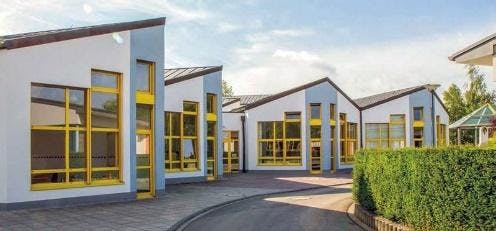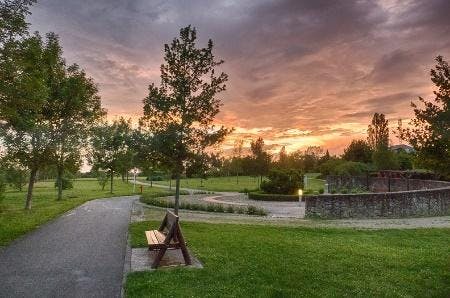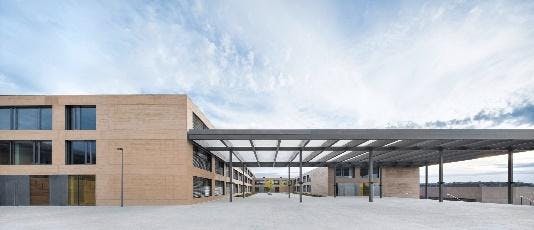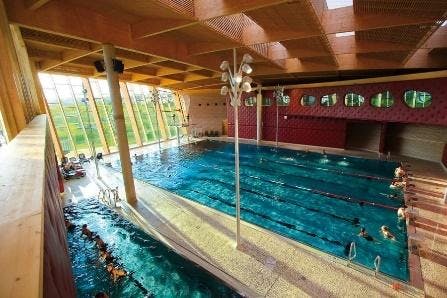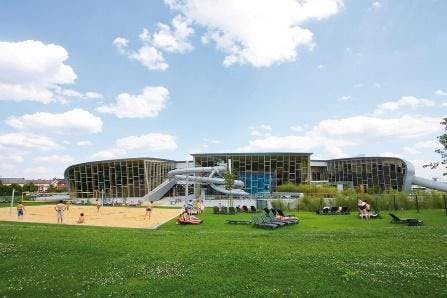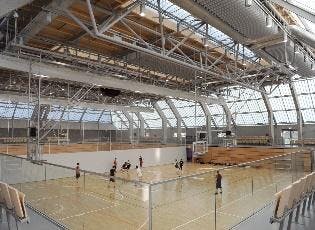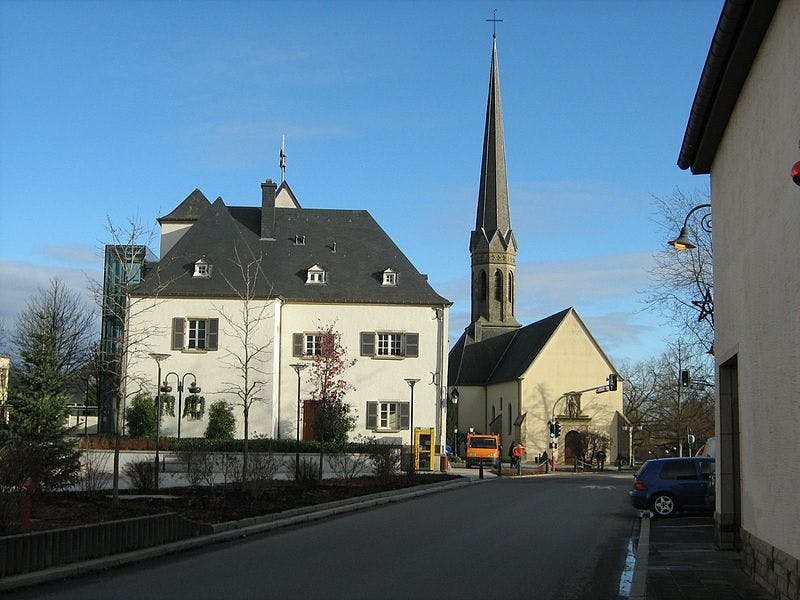
Bertrange commune: a tranquil suburb with urban connectivity
In this article, we embark on a journey through the historical corridors, explore the vibrant population, weigh the pros and cons of residing in Bertrange, dissect the area's transport accessibility, take a closer look at its infrastructure, and navigate the nuances of renting and buying real estate.
Nestled in the north-western outskirts, bordering the capital city of Luxembourg, the Bertrange commune offers a picturesque blend of urban convenience and natural tranquility. Its strategic location places it in proximity to neighboring Mamer to the northwest, Strassen to the northeast, Luxembourg City's Merl district to the east, and Leudelange and Reckange-sur-Mess to the south. To the southwest, it shares its border with Dippach.
General characteristics of Bertrange commune
Comprising three distinct localities, namely Bertrange, Beaufort, and Lorentzscheuer, this commune stands out for its unique charm. While Bertrange itself is the closest to the capital and boasts urban sophistication, Beaufort and Lorentzscheuer are predominantly embraced by green areas.
Bertrange's appeal as a residential haven stems from various factors, including its proximity to the bustling capital, excellent highway and national road connections, diverse facilities, commercial zones, and delightful residential areas. The communal atmosphere exudes a family-friendly and chic village ambiance. Notably, Bertrange residents enjoy a median monthly income of €10,179, securing the commune's position as the sixth-highest in the country.
Population of the commune
As of January 1, 2023, Bertrange's population stood at 8,668, ranking as the 17th most populous commune in the country. Notably, 54.14% of the population consists of foreigners, a figure considerably below the capital's average of 70.44%. In terms of land area, Bertrange spans 17.39 km², securing the 67th position among Luxembourg's 102 communes.
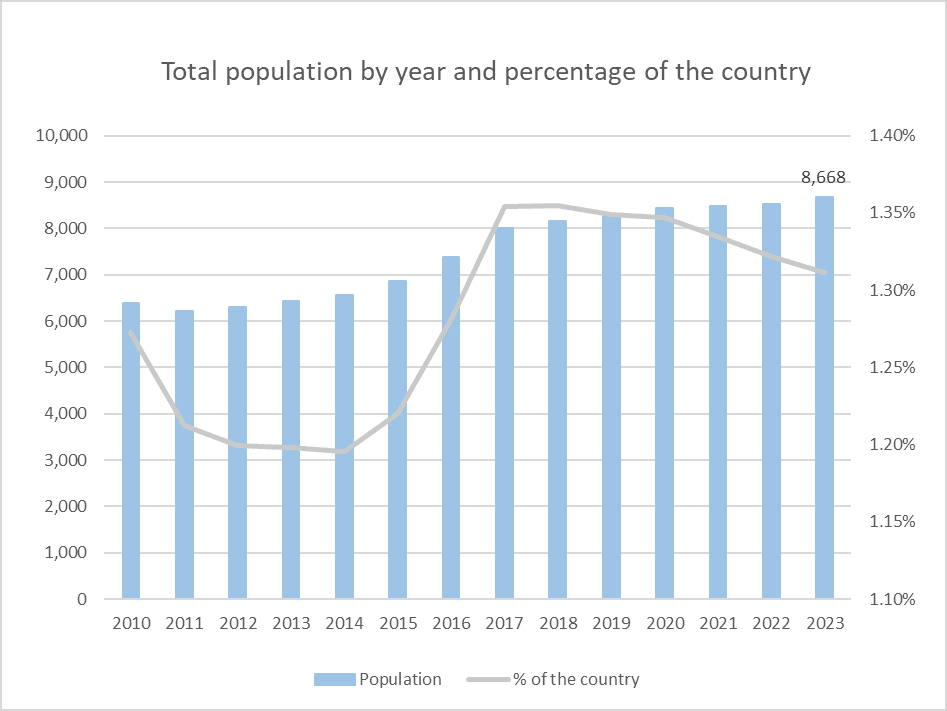
Transport accessibility
Bertrange is strategically positioned with excellent transportation connectivity, making it seamlessly accessible by various modes of transport. Whether by car, bus, bike, foot, or train, residents and visitors enjoy efficient travel options, enhancing the commune's appeal.





You can check in detail all the transportation options on the transportation page of the Bertrange commune or get detailed instructions to get from one point to another on mobilitet.lu and its route planner.
Renting and buying real estate
Driven by its allure, Bertrange has witnessed a substantial surge in real estate prices over the past two decades. While not reaching the soaring heights of neighboring Strassen, where prices are notably steep, Bertrange comes close.
Purchase prices stand at 11,146 euros/m², closely trailing the capital's average of 12,243 euros/m². Rental prices are at 26.81 euros/m², slightly below the capital's average of 30.72 euros/m². Despite the rise, Bertrange maintains a competitive real estate market, offering a desirable blend of accessibility and value within the Luxembourg landscape.
For buying the average price is
For renting the average price is
Applications, search, and profound advice in our guide to renting
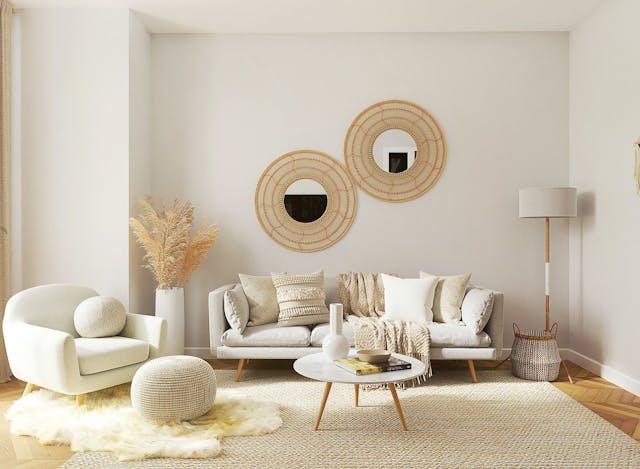
Infrastructure of the commune
Bertrange stands as a well-connected and vibrant commune with a rich tapestry of infrastructure. Boasting essential healthcare services in proximity, residents benefit from the renowned Centre Hospitalier de Luxembourg (CHL). The educational landscape encompasses the European School Luxembourg II, public primary schools, and specialized institutions like the Centre Européen de Formation Aéronautique.
Sporting enthusiasts can access state-of-the-art facilities such as the Centre Culturel et Sportif Atert and Niki Bettendorf Sports Center. Additionally, the community enjoys a retail haven with two of Luxembourg's major shopping destinations, Belle Etoile and City Concorde.
If you're considering making Luxembourg your new home, we encourage you to explore our range of articles that look in depth at the different city communes and neighborhoods.
Pros and cons of living in the Bertrange commune
Bertrange's strategic location presents an ideal blend, offering proximity to the bustling capital and seamless connectivity through Route d’Arlon, the A6 highway, and various national routes. A key advantage lies in its array of cultural, sports, and educational facilities, drawing numerous families seeking suburban tranquility without compromising access to essential amenities. The proximity of Centre Hospitalier de Luxembourg adds to its appeal, ensuring immediate healthcare access.
On the downside, the commune's allure has led to a gradual increase in real estate prices over the past two decades, albeit less pronounced than in neighboring Strassen. Despite this, Bertrange remains an attractive choice for those prioritizing a balanced lifestyle with city access and a rich array of local amenities.
What can you find in this commune?
With a population ranking 17th in the Grand Duchy and covering an area of 17.39 km², Bertrange holds the 67th spot among the 102 communes in Luxembourg, encapsulating a perfect blend of modern living and natural splendor.
Bertrange hosts a public primary school and the European School Luxembourg II, established in 2004, as well as many childcare facilities and education spots.
Primary Education
Operating under an international treaty, the European School provides comprehensive education in students' native languages, offering a curriculum from preschool to secondary education, culminating in the European Baccalaureate. While primarily serving European officials' children, it also admits other students based on section availability.
- Primary School. Phone: (+352) 26 31 23 23, Website: schoul-bartreng.lu Address: Rue Atert, Bertrange
- European School Luxembourg II. Address: 6 Rue Gaston Thorn, Bertrange, Phone: (+352) 2 73 22 41, Website: eel2.eu
Childcare Facilities
For young children, numerous daycare options are available, including a branch of the Rockids network and standalone facilities such as L'enfant Roi, Le Petit Prince, Lilabi, and Madagascar daycare.
- L'enfant Roi Nursery. Address: 41 Rue du puits Romain, Bertrange, Phone: (+352) 2 73 22 51, Website: lenfant-roi.lu
- Nursery Le Petit Prince. Address: 119 Rue de Luxembourg, Helfent Bertrange, Phone: (+352) 31 93 09, Website: creche-petitprince.lu
- Lilabi Nursery. Address: 80 Concorde, Bertrange, Phone: (+352) 25 21 41
- Nursery Madagascar. Address: 14 Rte de Longwy, Helfent Bertrange, Phone: (+352) 28 66 99 64, Website: kideaz.com
- Rockids Montessori Nursery. Address: 57 Cite Millewee, Bertrange, Phone: (+352) 20 40 87 00, Website: rockids.lu
Music Education
Music enthusiasts can explore the ArcA School of Music, dedicated to the artistic development of individuals of all ages. As part of the UGDA music school, ArcA stands as a key center for musical education in the country.
Specialized Education
Bertrange is home to specialized institutions like the CEFA (Centre Européen de Formation Aéronautique). Operating under the CEFA brand, it encompasses TOP JET TRAINING and HELI-LUXEMBOURG flight schools. Founded by Marc Chevenement, these flight schools aim to provide high-quality yet affordable training programs to future aviators, especially helicopter pilots.
Atert Cultural and Sports Center
The focal point of cultural activity in Bertrange is the Centre Culturel et Sportif Atert, a sizable venue constructed in 2010 to replace its predecessor, unable to accommodate the growing audience at various events.
This modern facility hosts a myriad of events, providing ample space for cultural and sports activities. The ArcA School of Music, previously mentioned, contributes to the cultural scene by hosting events in its facilities. Bertrange's official website features a dedicated page showcasing the local cultural agenda.
Saints-Pierre-et-Paul church
Beyond these cultural hubs, Bertrange boasts two sites of historical and cultural significance. The Saints-Pierre-et-Paul Church, dating back to the 10th century and meticulously restored in the 18th century, stands as an iconic symbol with its bell tower. Inside, the Via Crucis, created by renowned contemporary Luxembourgish artist Bettina Sabbatini, and the altar, a masterpiece by sculptor Jean-Georges Scholtus from the 18th century, add to the church's cultural richness.
- Address: Bertrange, Luxembourg
Schauwenburg Castle
Another noteworthy site is the Schauwenburg Castle, tracing its origins to feudal times and expanding over the centuries. With a varied history of owners and occupants, the castle now serves as a hub for the city's cultural life, contributing to the vibrant cultural tapestry of Bertrange.
- Address: Bertrange, Luxembourg
Learn more about Luxembourg's culture and traditions in our special guide.
While Bertrange itself lacks clinics or hospitals, residents benefit from proximity to the main healthcare facility in the capital, the Centre Hospitalier de Luxembourg (CHL), located within a 10-minute drive. The CHL encompasses four major poles, with three centralized in Rollingergrund: CHL Centre, CHL Maternity, and CHL KannerKlinik. For immediate pharmaceutical needs, the Pharmacie de Bertrange at 10 Rue de Luxembourg provides essential services to the community.
You can read more about urgent healthcare in our dedicated article: Emergency medical help in Luxembourg: ambulance and hospitals.
The prominent green oasis in Bertrange is Lenz Park, offering a vast expanse for relaxation and immersion in nature. With various trails and a picturesque central lake, it provides a serene escape.
Children are well catered to with numerous playgrounds scattered throughout the commune's different localities. Spillplaz's website simplifies locating and understanding each playground's features.
Beyond this, the localities of Beaufort and Lorentzscheuer are predominantly composed of green spaces, including wooded areas. These zones feature pathways and trails, allowing residents to seamlessly connect with the natural surroundings. Bertrange ensures a harmonious blend of parks, playgrounds, and natural retreats for the community to enjoy.
Bertrange boasts diverse sports facilities, including the previously mentioned Centre Culturel et Sportif Atert, providing approximately 1,500 m² for sports activities. The sports hall features telescopic and fixed seating for 1,500 spectators around the central court, designed for basketball, handball, volleyball, and complemented by a separate weight training room.
The Niki Bettendorf Sports Center caters to schools and clubs engaged in basketball, volleyball, and table tennis. Additionally, the locality features football and tennis courts near the primary school. The football field serves as the home ground for FC Sporting Bertrange, while the tennis courts are managed by the Tennis Club Bertrange.
For gym and weight training enthusiasts, CK Fitness is conveniently located within the City Concorde shopping center.
Although technically situated just beyond Bertrange's borders, the adjacent municipality of Strassen hosts Les Thermes, an aquatic center offering a variety of water attractions for relaxation and sports activities, including a large pool with a slide, sauna area, and swimming courses.
Atert Cultural and Sports Center
Niki Bettendorf Sports Center
FC Sporting Bertrange Football field
Tennis Club Bertrange
CK Fitness Bertrange
Les Thermes Nautical Center
Bertrange is fortunate to host two of Luxembourg's premier shopping destinations: the Belle Etoile Shopping Center to the north and the City Concorde Shopping Center to the south. Both centers offer a diverse array of shops, including prominent grocery stores like Cactus at Belle Etoile and Cora Concorde at City Concorde. Residents enjoy convenient access to a wide range of retail options for all their shopping needs.
Shopping center Belle Etoile
City Concorde
Find out more about Luxembourg shopping centers in our article.
Historical overview
The history of the commune is fascinating. There are not many information about Bertrange. However, it is possible to trace some important dates, which we have noted.
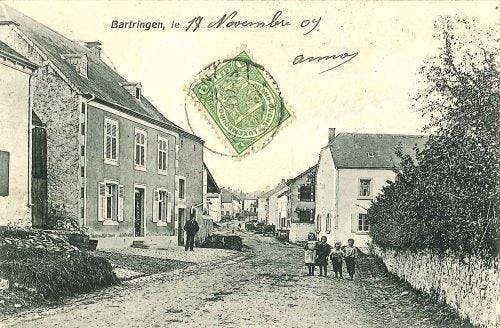
Origins and Evolution
Roman Era to Middle Ages
18th and 19th Centuries
Late 19th Century to 20th Century
Frequently Asked Questions (FAQ)
What are the major attractions in the Bertrange commune?
Bertrange offers a diverse range of attractions, including the picturesque Lenz Park, an expansive green space with scenic trails and a central lake for relaxation. The Saints-Pierre-et-Paul Church, dating back to the 10th century, stands as a historical and cultural landmark, showcasing intricate artistry by Luxembourgish artists. Additionally, the Schauwenburg Castle, with its feudal origins and ongoing cultural contributions, adds to the commune's charm.
How is the healthcare infrastructure in Bertrange?
While Bertrange itself lacks clinics or hospitals, residents benefit from proximity to the Centre Hospitalier de Luxembourg (CHL), a major healthcare facility just a 10-minute drive away. The CHL's comprehensive services, including specialized poles like CHL Centre and CHL Maternity, ensure residents have access to quality healthcare services nearby.
What are the shopping options in Bertrange?
Bertrange boasts two prominent shopping centers, Belle Etoile and City Concorde, offering an extensive array of shops, including major grocery stores like Cactus and Cora Concorde. These commercial hubs provide residents with convenient access to a wide range of retail options, from fashion to food.
What sports and recreational facilities are available in Bertrange?
Source: www.justarrived.lu, www.bertrange.lu, www.bertrange.lu, www.bertrange.lu, fr.wikipedia.org, www.cefa-aero.com, en.wikipedia.org, www.schoul-bartreng.lu, www.immotop.lu
We took photos from these sources: Luxembourg City Website, Wikimedia, schoul-bartreng.lu, eel2.eu, architecture&urbanisme21, Kewl.lu
